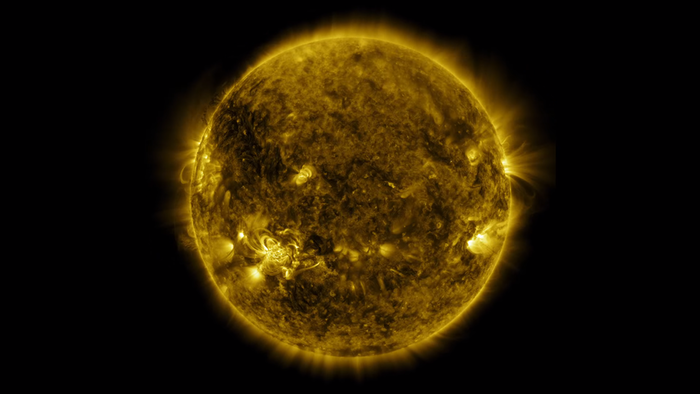NASA has released a stunning time-lapse video of our Sun constructed from images collected by the Solar Dynamics Observatory (SDO) over the course of its sixth year in space. The Ultra-HD quality video was recorded in the extreme ultraviolet spectrum.
The SDO was launched on Feb. 11, 2010 with a mission to maintain a near constant watch on our parent star, allowing us to gain a deeper appreciation of the complex electromagnetic processes prevailing in the atmosphere of the Sun. Our star's strong electromagnetic properties have the ability to interfere with modern day technology by creating flares and events known as coronal mass ejections.
The video is comprised of observations taken between Jan. 1, 2015, to Jan. 28, 2016. During this time, the SDO snapped a picture of our Sun once every 12 seconds across a wide range of wavelengths with its Atmospheric Imaging Assembly (AIA).
The extreme ultraviolet light captured by the SDO is ordinarily invisible to the naked eye, with a wavelength of around 171 angstrums, which highlights solar activity with a temperature of around 600,000 kelvin (1,079,540º F).
When played on its highest quality the video boasts a frame rate of 29.97 fps, with each frame representing a two hour period with a resolution of 3,840 x 2,160. The incredible detail conveyed in the video allows the viewer to observe a number of stellar phenomena. Dark filaments can be seen suspended in the corona by twisted magnetic fields, occasionally erupting in titanic coronal mass ejections.
There are also a number of instances where the Sun disappears altogether for a frame, or moves off center. These are the result of the SDO's orbit around our planet, which sometimes places Earth between the spaceship and the Sun, a planned maneuver designed to point the delicate instruments away from our star for calibration purposes.
The time-lapse video courtesy of NASA can be seen below.
Source: NASA
